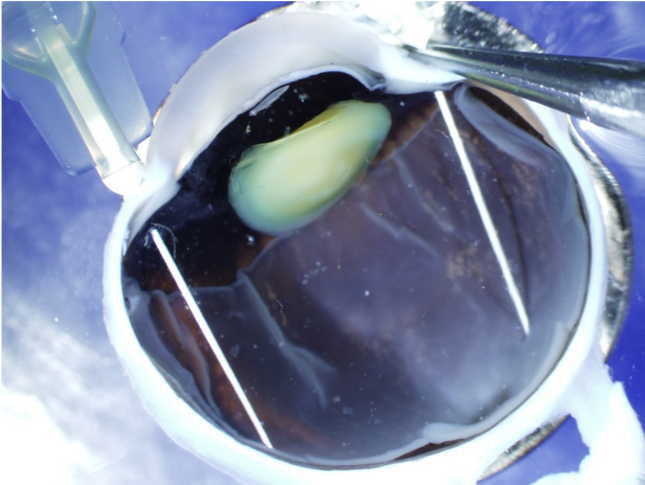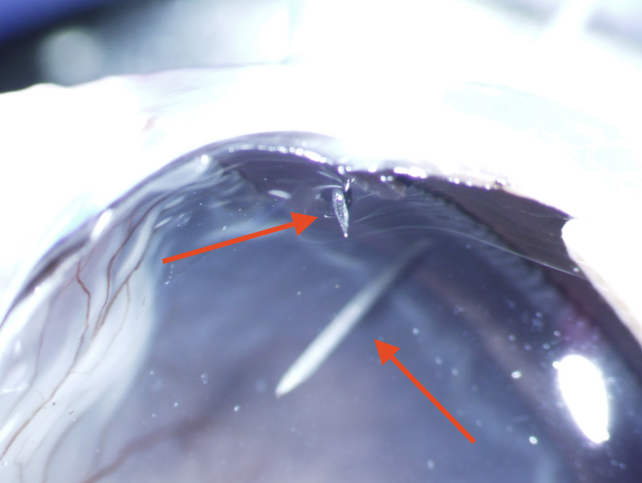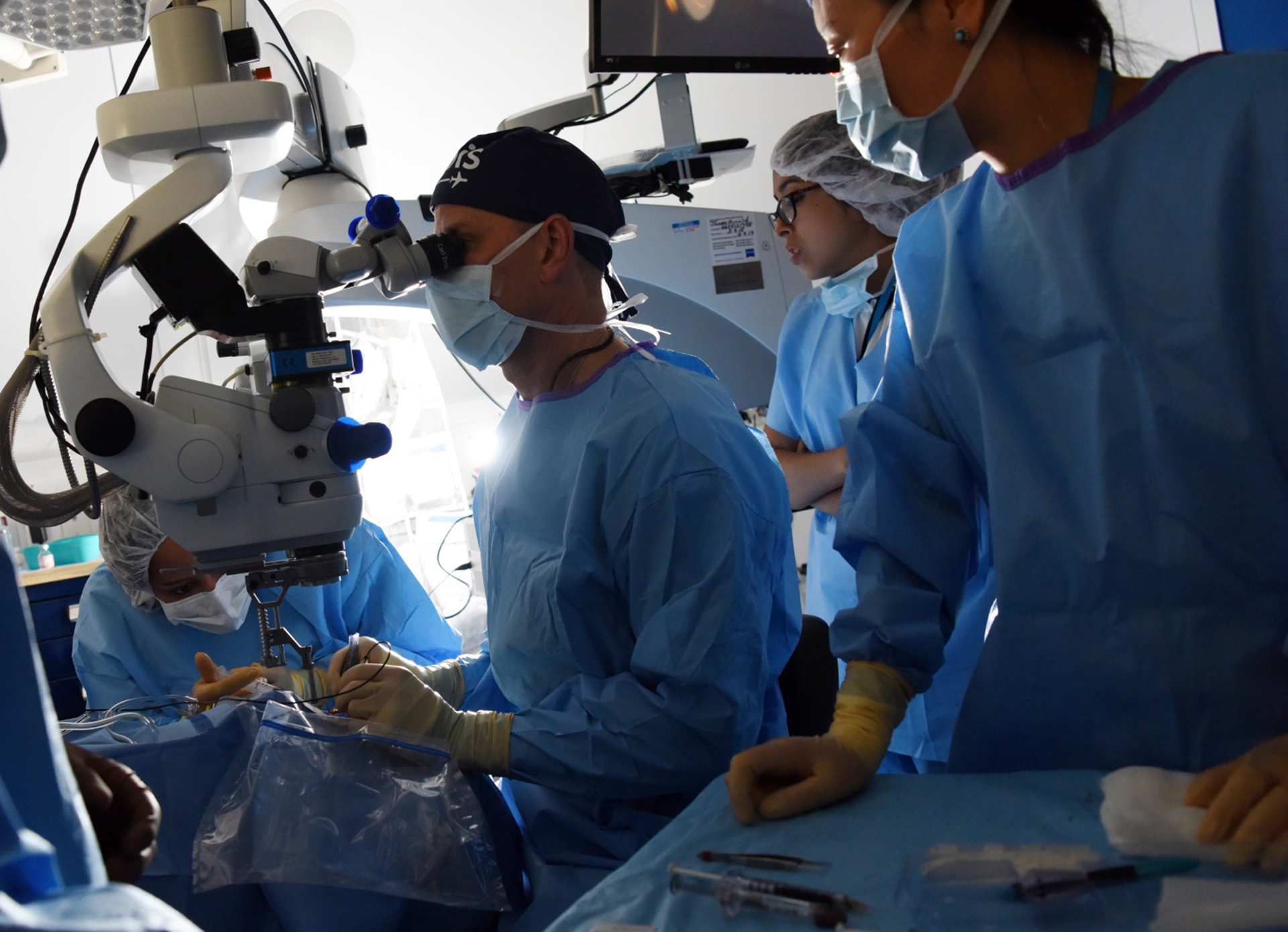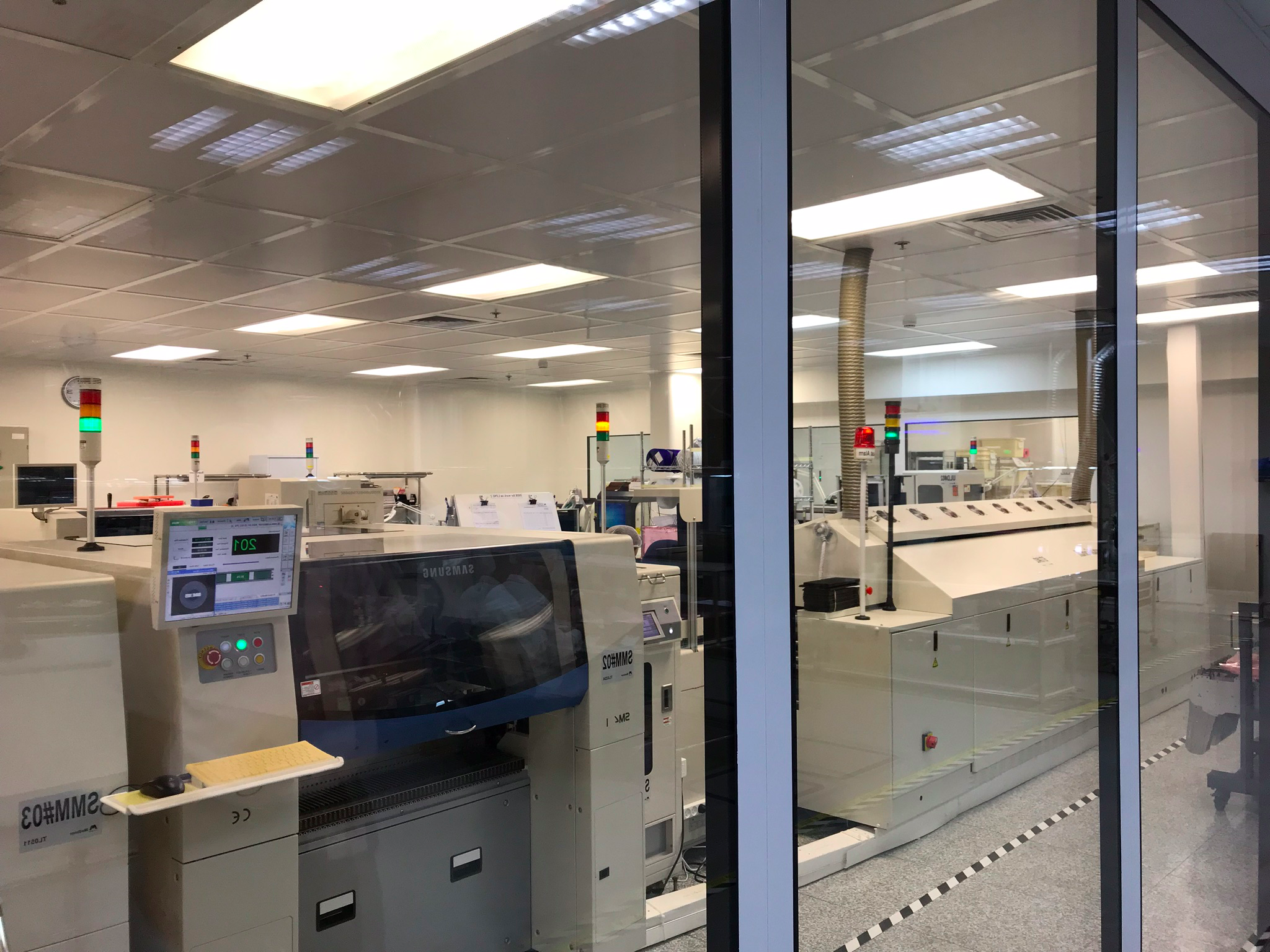We Design Baby-Sized Treatments
Timely eye injections are critical to treat babies diagnosed with Type 1 Retinopathy of Prematurity. Unfortunately, treatment with adult-sized needles is standard, making complications a common risk which could lead to blindness.
Standard ROP treatments have risks, but in many cases can be mitigated with logical fixes, like simply sourcing a baby-sized needle and using it exclusively.
Small World Vision is developing the SAFERTM Protocol, to design baby appropriate treatments as a new standard. In a control group of 100 babies, this protocol for ROP treatment has seen a 100% success rate in preventing progression of Type 1 ROP and thus maintaining the infant’s ability to see.
Common Practice

SAFERTM Protocol

The image on the left shows how needles that are too long can cause damage by penetrating the back of the eyeball. The image on the right shows appropriate baby-sized needles.
The image on the top shows how needles that are too long can cause damage by penetrating the back of the eyeball. The image above shows appropriate baby-sized needles.

S.A.F.E.R. Protocol TM
S
Stands for Short needle. Previously, most babies were injected using needles that were at least 8 mm long which can easily reach across the eye to damage the other side of the retina or the crystalline lens.
A
Stands for Antiseptic use before and after injection. Most babies that are born early are immuno-compromised. Betadine is applied before and after the injection in order to decrease the load of bacteria on the surface of the eye.
F
Is for 48 – 72 hour post-op Follow-up. Adults are always given post-injection follow-up steps. Babies can’t tell you if something doesn’t feel right. Mandatory follow-up is crucial to check for things like infection which can be devastating.
E
Stands for Extra attention to detail, including following a nomogram and always following sterile technique. Injections can only be delivered within a 1 mm safe window. Anything outside of this can cause retinal detachment.
R
Stands for Recheck every one to two weeks to make sure that the medication is working properly. This reduces ROP recurrence and checks for possible retinal detachment which can occur up to five years after surgery.
Compassionate Surgery and Education
The majority of infant blindness and eye disease can be prevented through education, technology and available treatments. From Peru to Vietnam, Small World Vision performs sight-saving surgeries and trains doctors and clinical staff in best practices.
In Latin America, Dr. Harper has worked with Orbis to perform surgeries in their Flying Eye Hospital. The aircraft enables world class surgical capabilities to be mobilized to areas of critical need and provides on-board training facilities for local clinicians.

Dr Harper conducting surgical training with local medical teams in Peru

Device Research & Development
Small World Vision partners with medical device developers to design products to prevent ROP. Our experience treating infants in both sophisticated and primitive environments provides insights for cost reduced devices accessible to all clinical budgets.
This is technology that doesn’t need to take over the market, but rather forces a change in the market for other companies to follow. This is a change that should value people over profit, where engineers are inspired to build devices with the poorest babies in mind.
Device Research & Development
Small World Vision partners with medical device developers to design products to prevent ROP. Our experience treating infants in both sophisticated and primitive environments provides insights for cost reduced devices accessible to all clinical budgets.
This is technology that doesn’t need to take over the market, but rather forces a change in the market for other companies to follow. This is a change that should value people over profit, where engineers are inspired to build devices with the poorest babies in mind.


